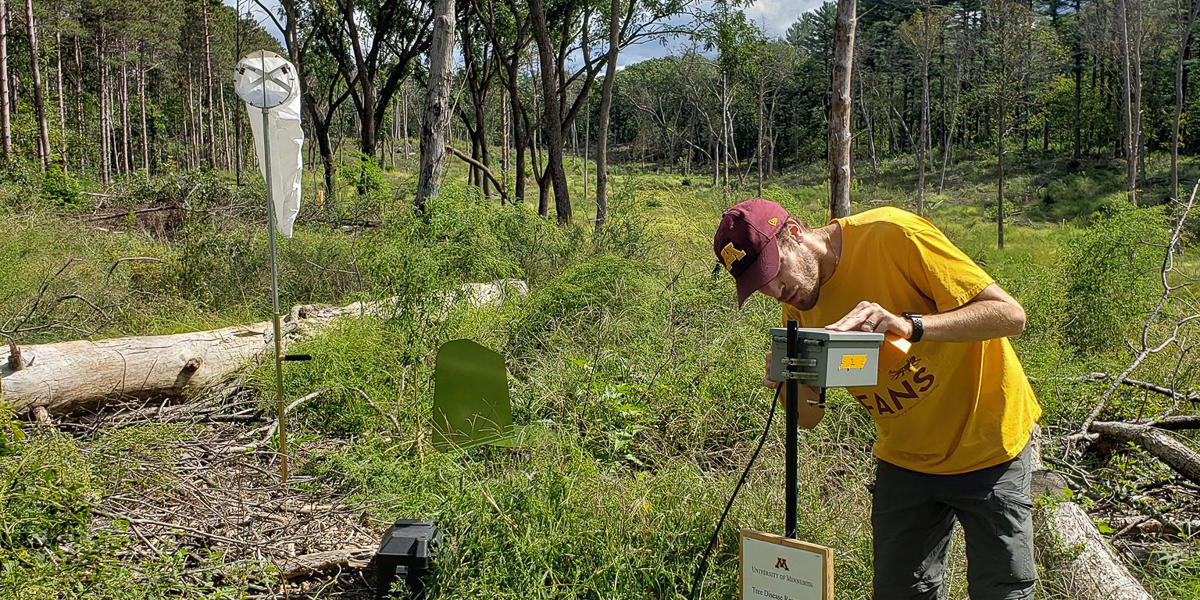
Postdoctoral associate Nickloas Rajtar sets spore traps in a wooded area
Background
Invasive forest pathogens have the potential to cause immense damage to Minnesota’s natural and urban landscapes and cause significant economic losses. Tree diseases such as the fungi causing Dutch elm disease and oak wilt are examples that have resulted in extensive mortality and devastation.
There are several invasive plant pathogens that have been reported, but have not spread throughout the state. Detecting these diseases early enables land managers to take action and contain the spread. Oak wilt, Heterobasidion Root Disease (HRD), and Phytophthora are some examples.
- Oak wilt has been found in the Twin Cities and has an expanding northward range. There is no cure for oak wilt, so early detection and containment are critical.
- As of 2024, HRD has been detected in 30 counties in Wisconsin with 4 of the counties adjacent to Minnesota. It poses a serious threat to red and white pine trees.
- Phytophthora has an extremely large host range and an ability to lay dormant in soils and plant material. The recent introduction of Phytophthora ramorum (which causes sudden oak death) on nursery plants in Iowa, Missouri, Indiana, Kansas, Kentucky, and other states demonstrates the need for an active Phytophthora surveillance program. In California alone, sudden oak death has killed more than a million trees. Previous research has successfully detected 21 Phytophthora species in Minnesota, including 13 new Phytophthora species that had not been previously reported in the state.
Research questions
- Where is HRD present, according to windsock spore traps set across Minnesota?
- Which species of Phytophthora are found in nursery stock, forests, waterways, and urban parks?
- How do Phytophthora species affect common Minnesota native tree species such as red oak, sugar maple, paper birch, larch, and rhododendrons?
- Where in Minnesota is oak wilt present, according to traps containing beetles that disseminate the disease and windsock spore traps?
Practical implications
By carrying out careful biosurveillance for woody pathogens, researchers will be able to provide critical information to land managers about potential infection centers. This will allow land managers to proactively manage the pathogens, mitigate damage, and restrict further movement of these serious tree diseases. The practices put in place by this team may have long-term effects on the efforts to protect Minnesota trees against disease.
Outcomes
This project began in January 2024 and is in progress for the next several years. Please check back at a later time for updates.
To stay connected, sign up for the MITPPC newsletter and follow us on Facebook and LinkedIn.